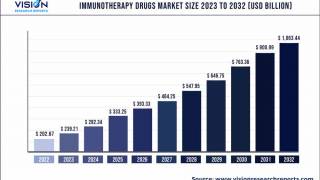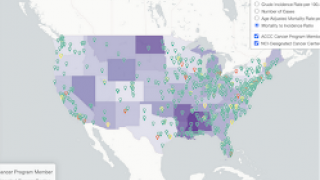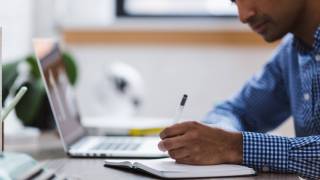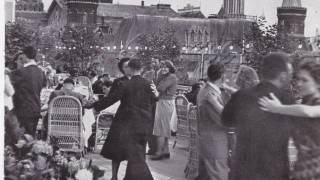Millennials Successfully Avoiding Skin Cancer

A new study says the apparent decline of 23 percent in the incidence of invasive melanoma in people younger than 30 years of age points to the success of skin cancer prevention efforts.
This study reported among males, the cancer incidence rate dropped about 4 percent per year and, among females, about 4.5 percent per year.
Melanoma is epidemiologically linked to UV exposure, either by sunlight or tanning beds, particularly childhood sunburn.
"There seems to be a breakthrough happening that might really reverse the trend for increasing melanoma incidence," said Margaret M. Madeleine, M.P.H., Ph.D., a co-senior author of the study and a Fred Hutch epidemiologist specializing in cancer-incidence trends, in a press release.
But, this good news published in JAMA Dermatology on November 13, 2019, is contrasted with a 1.8 percent annual increase in melanoma cases for those over 40 years of age.
This increase was driven by the higher incidence of melanoma in older adults. In fact, those 70+ years of age saw about a 50 percent increase in total cases, for the years studied.
Furthermore, this study found young adult women appeared to have 2x the risk of melanoma as young adult men.
In this study, 988,103 cases of invasive melanoma were reported in the United States from 2006 to 2015 and did not contain skin pigmentation and sun protection history.
This is important news since, despite changes in melanoma therapy associated with improved survival, melanoma remains the deadliest skin cancer in the United States.
Melanoma is the 5th most common cause of cancer in the United States, with more than 9,000 deaths per year.
Despite this increasing incidence and overall association with health, 2 positive trends in melanoma care are suggested in treatment and prevention.
The first is the apparent improvement in systemic therapies over the past 5 years, with new targeting and immunotherapies that are reporting improved survival outcomes for patients with metastatic disease.
The second enhancement is an apparently marked ongoing downtrend in the incidence of melanoma in adolescent and young adult populations.
The Centers for Disease Control and Prevention (CDC) Healthy People 2020 program set a target to lower the proportion of adolescents who tan indoors to 14 percent by 2020.
This CDC target has already been surpassed.
As of 2017, 5.6 percent of teens reported using an indoor tanning device in the previous year. Which is a significant decrease from 2009, when 15.6 percent of adolescents reported using an indoor tanning bed.
In addition, the Healthy People 2020 target to lower the proportion of adults who use indoor tanning devices to 3.6 percent. Adults who are 50 years old or older had already surpassed this target in 2010 and continued to do so in 2015.
In 2010, 5.6 percent of adults reported tanning indoors in the last year.
This reported data are observational and thus cannot conclusively determine the cause of this statistically and clinically significant decrease.
However, a likely explanation for the reduced melanoma incidence in adolescents and young adults is a success at ‘increased UV exposure protection.’
Recent skin cancer vaccine news
November 6, 2019 – An innovative San Diego based biopharmaceutical company presented clinical data from the Melanoma Antigen Vaccine Immunotherapy Study (MAVIS), a Phase III clinical study of seviprotimut-L, which is a melanoma vaccine candidate.
October 23, 2019 – Cancer immunotherapy has revolutionized the treatment of certain cancers, such as lymphoma, lung cancer, and melanoma. And cancer immunologists at Washington University School of Medicine in St. Louis want to change that situation. A new study published in the journal Nature indicates a new way for cancer immunotherapy to spur a more robust immune response.
September 30th, 2019 – A new study in The New England Journal of Medicine reported the combination of 2 immunotherapy drugs, ipilimumab, and nivolumab has stopped or reversed the progression of advanced melanoma for five years or more, in about 50 percent of study participants.
August 16, 2019 – Florida scientists Michael and Patricia Lawman imagine a day when cancer could be treated with a single vaccination, with no debilitating side effects. This husband-and-wife Ph.D. team has developed a cancer vaccine. This vaccine candidate is called ImmuneFx (IFx), which helps train the immune system to identify and destroy cancerous tumor cells.
August 5, 2019 – Researchers at Tel Aviv University (TAU) announced they have developed a novel nano-vaccine for melanoma, the most aggressive type of skin cancer. Their innovative approach published in Nature Nanotechnology has so far proven effective in preventing the development of melanoma in mouse models and in treating primary tumors and metastases, that result from melanoma. The focus of this research is on a nanoparticle (nano-vaccines) that serves as the basis for the new vaccine.
The previous Surgeon General’s Call-to-Action to Prevent Skin Cancer supports efforts to improve sun-protective behavior, and potentially improved health outcomes remain an active research interest.
The U.S. Surgeon General message ‘emphasizes the need to act now to solve the major public health problem of skin cancer. To reduce skin cancers in the population, people must get the information they need to make informed choices about sun protection, policies must support these efforts, youth must be protected from harms of indoor tanning, and adequate investments need to be made in skin cancer research and surveillance.’
‘Achieving these goals will not be a small task.’
‘It will require dedication, ingenuity, skill, and the concerted efforts of many partners in prevention across many different sectors. We must act with urgency to stop the ever-increasing incidence of skin cancers in the United States,’ concluded this Surgeon General message in 2014.
These new study’s data provide an impetus to further improve multimodal efforts aimed at reducing the burden of melanoma and encourage ongoing UV exposure protection efforts throughout the lifetime of individuals.
This work was supported in part by National Institutes of Health grants P30CA015704, T32CA009515, T32CA092408, and T32CA009168; Fred Hutchinson Cancer Research Center Integrated Immunotherapy Research Core; and a Society for Immunotherapy of Cancer–Merck fellowship. Various researcher potential conflicts of interest were disclosed.
Cancer news published by Vax-Before-Cancer
Our Trust Standards: Medical Advisory Committee

























